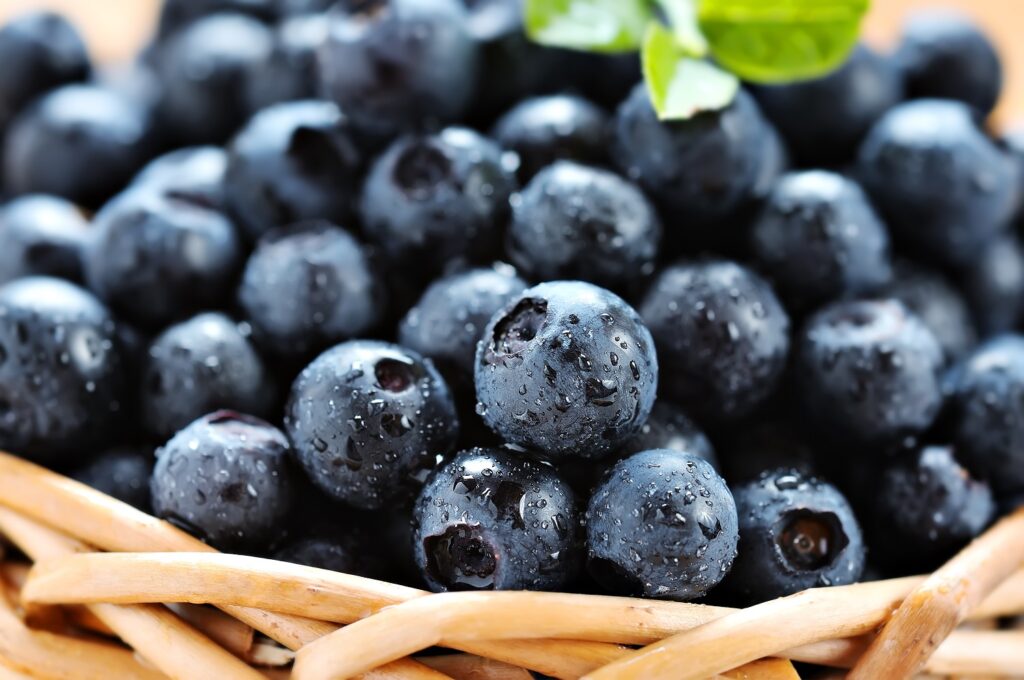Agronometrics in Charts: Blueberries shine as Mexican berry exports beat out beer and tequila

In this installment of the ‘Agronometrics In Charts’ series, Sarah Ilyas studies the state of the Mexican blueberry industry. Each week the series looks at a different horticultural commodity, focusing on a specific origin or topic visualizing the market factors that are driving change.
Berries dominated Mexico's agri-food product exports in January 2023, surpassing beer and tequila exports, which typically lead this market.
According to the Bank of Mexico (Banxico) and Grupo Consultor de Mercados Agrcolas (GCMA), the country's exports of berries (including fresh or frozen strawberries, raspberries, and blueberries) totalled 374 million dollars in January. Exports of beer declined to 348 million dollars while exports of tequila totalled 292 million dollars.
Mexico is ramping up volume and increasing arrivals are being seen, though overall the market remains tight. While there’s been blueberry production in Mexico since the fall, the spring is where the bulk of the season is. “Right now it’s in Jalisco and the weather is very good and volumes are increasing and good quality is being seen on consistent arrivals,” says Luciano Fiszman of Gourmet Trading Co.
 Source: USDA Market News via Agronometrics.
Source: USDA Market News via Agronometrics.
(Agronometrics users can view this chart with live updates here)
What’s also being seen right now is a two-tier market on blueberries. “Chilean product is one price while Mexican fruit is higher priced,” Fiszman says. “It’s product you picked that week from Mexico compared to Chilean product that will have been picked almost a month ago. There’s nothing wrong with ocean product but you pay for freshness.”
 Source: USDA Market News via Agronometrics.
Source: USDA Market News via Agronometrics.
(Agronometrics users can view this chart with live updates here)
With regards to demand, Fiszman discusses the emergence of ‘superusers’ of the berry. “These people consume blueberries every day and will consume more blueberries than a handful of families who are occasional buyers,” he says. “They’re motivated by their health and if you have a sweet crunchy piece of fruit, it’s a great combination.” In short, this means supply and demand are in good shape.
“Historically, Mexico hits its import peak during the late March, early April window and we expect close to 180 million pounds coming in,” said Powell regarding their forecast for this year’s season. According to Powell, Mexican fruit is more appealing to retailers since it is just three days from the market, compared to three weeks for fruit from other producers. This season, all Mexico imports have surpassed quality expectations and the supply has been steady and consistent.
The second annual South American Blueberry Convention will be held at the Monticello Conference Center in San Francisco de Mostazal, Chile, on April 18, 2023.
"The supply of blueberries from the South American region and Mexico dominates the market between October and April, so it is essential to understand the production dynamics and jointly seek to increase demand," says Andrés Armstrong, executive director of the Blueberry Committee of Chile, ASOEX.
The conference will stimulate the industry to focus on high quality, novel varieties and logistics concerns in the production, export, and worldwide consumption of the fruit through engaging conversation panels, exhibitions, and presentations by national and international stakeholders.
 Source: USDA Market News via Agronometrics.
Source: USDA Market News via Agronometrics.
(Agronometrics users can view this chart with live updates here)
The Mexican blueberry industry is constantly implementing environmental and social responsibility programs and has made it a priority to become a green industries pioneer. This entails the installation of technology that aims to maximize and limit the use of natural resources, as well as campaigns built around the farm worker.
Another important aspect to consider is the growing acceptance of blueberries in the domestic market. In recent years, the National Association of Berry Exporters (Aneberries) and its 37 members have developed marketing initiatives directed at Mexican purchasers in an effort to increase blueberry consumption in Mexico.
In addition to continuing to meet global demand and broaden market presence, the next challenges for the Mexican sector will be increasing worker availability and maximizing social responsibility.
In our ‘In Charts’ series, we work to tell some of the stories that are moving the industry. Feel free to take a look at the other articles by clicking here.
All pricing for domestic US produce represents the spot market at Shipping Point (i.e. packing house/climate controlled warehouse, etc.). For imported fruit, the pricing data represents the spot market at Port of Entry.
You can keep track of the markets daily through Agronometrics, a data visualization tool built to help the industry make sense of the huge amounts of data that professionals need to access to make informed decisions. If you found the information and the charts from this article useful, feel free to visit us at www.agronometrics.com where you can easily access these same graphs, or explore the other 21 commodities we currently track.














































